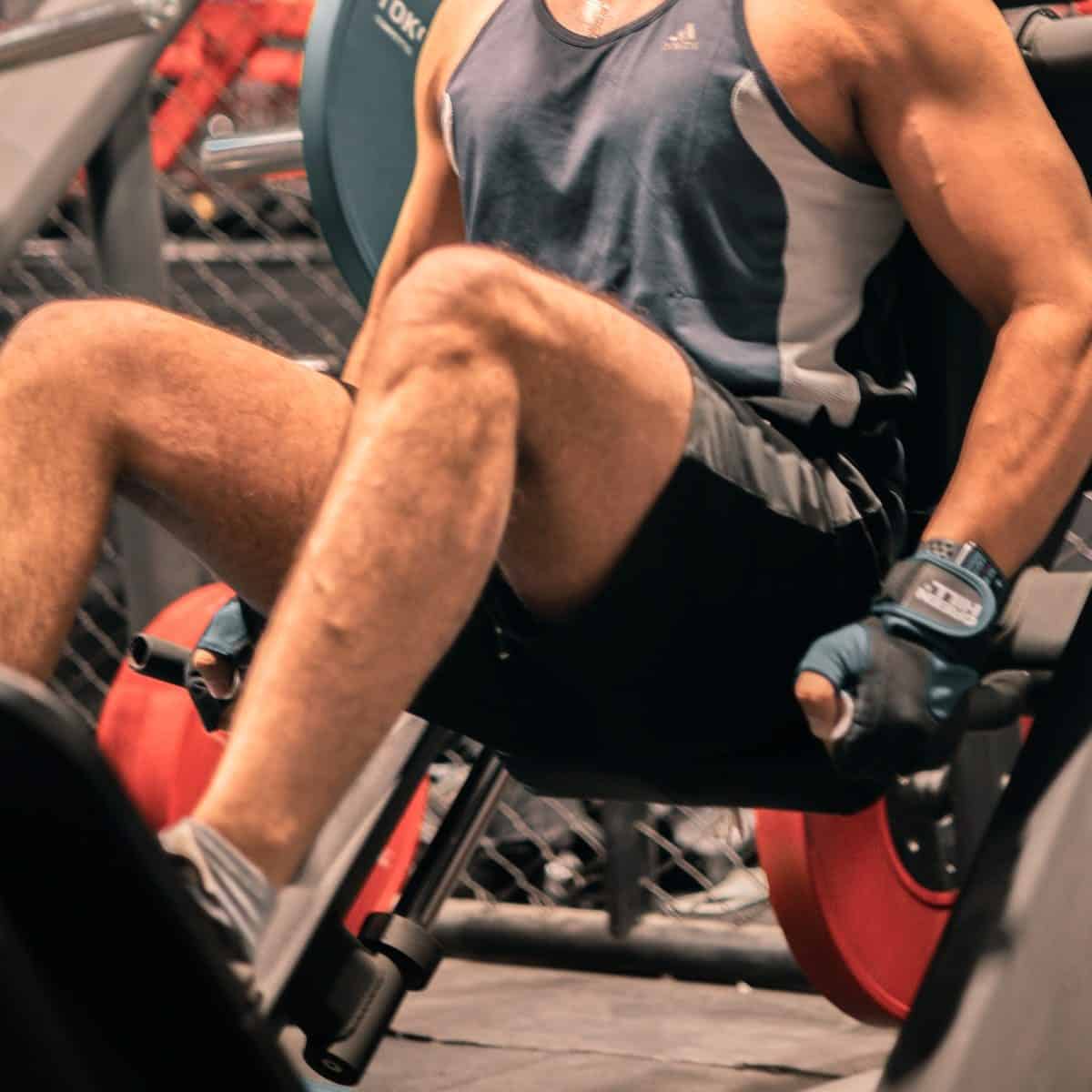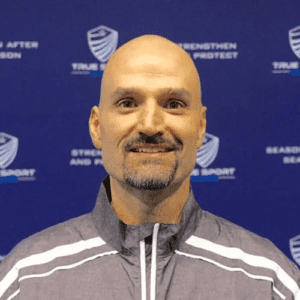By Marc Taczanowski, DC, DACBSP, CSCS, EMT-B
I’m quite fond of this subject and when people pick my brain in the gym, even the gym rat-meathead guys who have been doing the same thing for decades, I enjoy the look of enlightenment on their faces when I have them try an exercise in a new, more challenging way. This “new way” is the gym workout tip that we will dive deeper into below. (Full disclosure – I love a good meathead workout now and again.)
Back in MY day!
I’m old-ish. I grew up without YouTube, or Tik Tok. I had to get my information from books or other people. Yes, we had to INTERACT. I know most of you young ones are calling me a boomer right about now but I’ve earned it! So how did you workout?
- You went to the gym and watched the big guys lift because they MUST have been doing something right if they were big. Right? It is possible. It is also possible that they never had to lift a weight and they’ll still be blessed with great genetics. Bunch of A-Holes if you ask me – lol.
- You read Muscle and Fiction, I mean Fitness magazine and tried as many tips and tricks as you could.
- Being young and full of delusions of attaining that Mr. Olympia physique, we all pressed on. Literally and figuratively. Little did we know that chemical help was truly needed to break past our genetic barriers to achieve such lofty aspirations.

As an aging fitness enthusiast (I’ll never be in the shape I want to be, but what I learn trying to get there drives me to continue the pursuit) I have learned and continue to learn so much. Not really from books, magazines, apps, or professionals. But from my own exploration and experiences in the gym. I’m now using common sense approaches to lifting and listening to how my body reports back on a continual basis. It is ever-changing.
THERE ARE NO BAD EXERCISES
I’m not really on social media much but through my news feed I always see headlines like “The one exercise trainers agree should NEVER be done.” This is total clickbait.
After I click the link (I’m not immune) then I investigate what concepts or ideas they are promoting.
In all honesty, there are no “bad” exercises. If you see me in the gym and ask me about any exercise my first question after observing the movement would be, “What is your goal?”
After I hear your answer, my next question will be, “Where do you feel it?”
If your goal and your resulting sensation match up, it’s a valid exercise. If they don’t, it’s not.
The argument can be made for functional exercises, open chain, closed chain, posterior chain, plyometric, deficit lifts, compound, isolation, ETC. What am I going to say? “What’s your goal?” Then our conversation can continue.
Gym Workout Tip #1. WARM UP SETS ARE NOT JUST FOR WARMING – THEY ARE FOR LOCATING!

So how does form play into all this? Do these sound familiar?
- “Pretend like you’re hugging a tree for your chest flys.”
- “Stick your butt out for your squats.”
- “Pinch your shoulder blades together like you’re squeezing a pencil between them.”
The list goes on and on. Why are these the orders from our trainers? Simply put, these commands are designed to help you find the muscles you are looking for.
Most people have their favorite muscles to work out and most have their muscles that they’d like to skip for the week. The favorite muscles are the ones you likely connect well to and subsequently respond well to training. They get sore. They grow. Easy peasy.
The stubborn muscles are the ones that no matter what you do in the gym they don’t respond. You cannot get them very sore and they never grow. The exercises are too difficult. Wah wah! Finding a muscle is the most important part of any workout and our priming activations (YouTube channel or App) make this a breeze. I personally have a hard time connecting to my shoulders and biceps. It used to be my lats as well but one day, when I was in my 40’s, I felt a contraction, bordering-on-cramp, sensation and I thought to myself, “THAT’S MY LAT!” Holy crap I finally found it. Now that I know the feeling I’m supposed to feel when I work out my last, I can find it every time. Now it responds to the workout.
Try This Priming Activation for Your Lats
When I get to the gym I make sure that whatever body part I’m training I know what it should FEEL like when I contract it. If I do not feel the muscle well, then I’ll use our priming activations to stimulate more muscle awareness, and only THEN will I continue my workout.
Here is possibly the best example of why FEEL is more important than form. We’ve had knee pain patients visit us who have failed a round of PT and are still seeking relief. I’ll ask them what kind of exercises they’ve done to this point and they will invariably mention “clamshells.” A great exercise meant to stimulate more activity in the hip stabilizers (glute med/min). I say, “Fantastic. Can you show me the exercise?” They set themselves up and from my observation they are doing everything correctly. Then I’ll ask them, “Where do you feel this? Which muscle is doing the most work?” They normally respond by pointing to the lateral thigh. This is the vastus lateralis. It can assist with clamshells but it is not the desired target. In fact if this is the only place being stimulated with the exercise, they are actually making their knee problem WORSE! Perfect form with a negative effect.
Clamshell Exercise and Priming Muscle Activation
On the opposite side of the equation, let’s take the same exercise and put them in a less-than-ideal position. If they still feel it where they are supposed to feel it and it challenges them, then it really doesn’t matter what it looks like. Get it? FEEL OVER FORM every time. Consider feel as the foundation for any other type of lift you’d like to perform. If you can focus in and feel any and all muscles in your body, then you can train them in myriad ways.
Gym Workout Tip #2. IF YOU KNOW YOU HAVE A WEAK SIDE, WHY TRAIN SYMMETRICALLY?

Almost invariably when you ask a gym goer if they have a weak side, they will admit that they do. Depending on their exercise it may always be one side or possibly due to an old injury it could flip to the opposite. Then I’ll ask them if they train unilaterally or asymmetrically. Most of the time they don’t do either.
I know there is a little neurological crossover when it comes to our human engineering, but when I’m weak on one side I feel pretty strongly about paying a little more attention to that side so it can potentially catch up to my strong side. How do you know you have an asymmetry? That’s the beauty of our system. When you do our warm up, you are locating your muscles. In the process you are also assessing them for strength, stability and symmetry. If after your assessment you feel you are perfectly symmetrical, then you can train symmetrically and bilaterally for that matter.
Gym Workout Tip #3. IF YOU DON’T FEEL SORE IN THE DESIRED MUSCLES FROM YOUR WORKOUT, IT MEANS YOU WORKED AROUND THEM.

I can’t tell you how many times I’ve finished a workout and felt satisfied. Only to find out in a day or two that I did not produce any soreness in the desired areas. To me this is a fail. It means I must be compensating somehow and this compensation pattern will eventually lead to a pain complaint and sports injury. I call this phenomenon your “Workout Audit.” It is unfortunately retrospective but it certainly confirms you hit the right stuff.
DOMS, or delayed onset muscle soreness occurs the day after a workout and usually peaks on the second day. I have experienced soreness for up to 5 days when I blasted a body part with a bit too much fervor.
Muscle soreness (DOMS) comes from micro-tears in the musculature and the subsequent inflammation that stimulates healing and growth. It was once thought that lactic acid creates DOMS but lactic acid actually creates the soreness/fatigue felt during exercise.
So let’s say that you didn’t feel soreness in the muscles you tried to target. What do you do? Should you do the exact same workout you did the last time? The definition of insanity fits well in this space. Of course not! Something has to give.
The most egregious attempt at correction for this failure is to add more weight. This concept might be a bit tough to put into words but I’ll try.
Imagine your left bicep is weak. Weaker than you even know. You can still do a bicep curl with a reasonable weight. How is this possible? Well, muscles almost never act alone so since your bicep cannot handle the load, some recruits are called in. The brachialis can assist. So can the wrist and finger flexors. With all of this assistance the movement can be completed. HOWEVER, the load that was meant for the bicep was now shared amongst a complement of muscles. This means your bicep wasn’t terribly sore and therefore did not respond.
OK, let’s add more weight. We know the bicep doesn’t have great capacity to resist load so what will happen?
More recruits? Possibly.
Better targeting of the biceps? Rarely. So here is my pro workout tip #3 for you: When you cannot locate or create soreness in a muscle the best play is to reduce the load until the muscle is felt. Sometimes this even means using the pink weights! Who cares as long as they respond.
Gym Workout Tip #4. DO THE THINGS THAT ARE THE MOST CHALLENGING.

I have a friend who, when I see him in the gym, he is always on the seated calf raise machine. One day I asked, “Why do I always see you on this machine?” He replied, “Because I’m good at it.”
What is the most common day for doing chest? It’s typically the first day in the week. Why, because nobody wants to miss the chest.
You know which is my first day? LEGS! Why? Because I hate doing them. They never slip through the cracks.
Doing things that are the most challenging (and least favorite) has a two fold benefit.
- Complete more full weekly training cycles. If a specific workout (like legs in my case) is your last day of the week you may feel less motivated to finish out the week. If your favorite body part is last, you’ll complete more full weekly cycles of your program. It’s like having dessert. Or saving your favorite morsel of dinner for your last bite. The psychology of this runs deep.
- Find the weakness/challenge and train the muscle in new ways to break through your personal plateaus. Our brains are complex, albeit simple in many ways. The brain always seeks comfort, ease, or strength.
If I ask you to lift a heavy box, your brain will attempt to do this with the least amount of physical and mental stress possible. It doesn’t mean it will use proper biomechanics to do so.
So in the gym, this translates into a phenomenon that few people exploit. The position you choose for your first exercise will be your strongest, easiest, and most comfortable. Does it mean it’s right? Quite possibly but this is not guaranteed. Remember we said, “Do the things that are the most challenging.” Assuming your first set was your strongest, then what should you do for your follow up sets? CHANGE THINGS UP.- Vary your hand holds,
- Change your angles and vectors.
- Explore where you may uncover some insidious weaknesses that could haunt your body in the future.
If you find something challenging, stay there and train it. Even when we prescribe our therapeutic exercises for our patients we use this principle.
If you can find a position that sucks, you’ve struck gold. Even cramping, which has been discussed in other blogs or on our YouTube channel, means you’ve struck gold and found a weakness.
Gym Workout Tip #5. Incorporate End Range Training

We spoke earlier about where I originally learned lifting principles. You may not remember the Joe Weider name but he is undoubtedly one of the OG’s. This concept was promoted by Joe decades ago. It crosses over into the world of physical therapy and rehabilitation and it even separates the meatheads from the rest.
If you train a joint in its FULL range, you will maintain if not increase flexibility. If you perform short stroke mid-range contractions with no end range exploration, you’re going to be the Hans & Franz of SNL fame. Musclebound, gray sweatsuit clad men who sound like Arnold and can’t even get their hands together to make a clapping noise.
Being muscle bound and remaining flexible are easily achieved with more thoughtful training.
Try this exercise to explore full range of motion of your hips
We have a patient who is being told by his Orthopedist to stop working out because he feels it will interfere with his desired sport. Our instruction has helped educate this patient on smart lifting principles so that his workouts COMPLEMENT his desired sport. Gym workouts can get a bad rep but with the concepts laid out in this article you can use your gym time to assess and correct imbalances, improve performance in your desired sport and achieve your fitness goals without breaking down.
MOST IMPORTANT TAKEAWAYS:
- There are no bad exercises.
- Warm up sets are not just for warming, they are for locating!
- If you know you have a weak side, don’t train symmetrically!
- If you don’t feel sore in the muscles you attempted to workout, you worked around them.
- Do the things that are the most challenging. If you only do the things you’re good at, you are only feeding your ego. If you do the things you are bad at you are feeding your body.
- Incorporate end range training.





